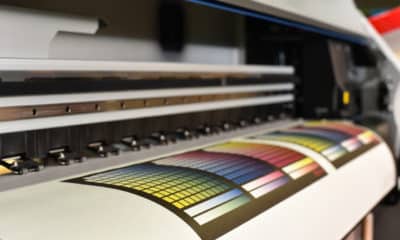How do signshops arrive at their prices? If they are using software, which is the best and most user friendly?
We received a number of versions of this question this month, so it’s a topic on the mind of a lot of Brain Squad members. Without supporting data, we are unable to know how all or even most signshops arrive at their prices — so many different shops are out there. But we feel it is fair to say that more and more are using software, or like one squad member stated, updating their software to more modern applications. Shops not using at least estimating software, if not full-fledged sign management software, face a distinct disadvantage in the time for and accuracy of their pricing, so if you’re not currently using something, you probably should look into it. As for which app is the most user friendly — SquareCoil, Corebridge, SignTracker, shopVOX and others — that’s likely up to individual users. Request contacts at shops using them, and then ask those folks what they think. You can also do some research on social media.
To Dale Salamacha: What percentage of your total profits comes from boring, predictable projects? How do you assess when you want to break into a new market (region, type of sign, type of client, etc.)?
DALE RESPONDS: We do our best to stay away from “boring” projects. (I mean, there’s no fun in those, right?) But if we break it down into “predictable” projects, or rather the client projects that we know a predictable amount of revenue yearly, we can get a very good picture of our direction and percentages of our overall numbers. I like to look at a two-year culmination to get the best average, but the majority of just our Top 20 clients are the same that we’ve had for decades.
In 2022-23, our Top 20 spent just shy of $5 million. Out of those 20, six are what we consider one-off projects that won’t repeat every year. Those six accounted for $1,144,000, or right around 23% of that revenue. The caution for 2024 is that Media 1/Wrap This will only take those one-offs if they do not interfere with us taking care of our year-in-year-out clients. We have lately spent too much valuable time on them at the expense of our main clients (see this page).
As far as when to break into new markets, we only go after the market segments that we specialize in — or we enjoy the most. Pest control fleets are our biggest segment for wraps, with over 800 vehicles a year wrapped. So, when we want more wraps, we go after more pest control companies and more fleet work. Meanwhile, we are not pushing color-change wraps as much. We still do them; we just don’t go looking for them. We love doing boat wraps, so we pursue the marine market.
We enjoy doing large-scale stadium signage, so we look for that type of work. Anything we don’t specialize in, we stay away from. There are other shops out there that can better help that customer.
To sum up: We keep our steadfast clients at around 75% of our revenue and keep projects that take our attention off of them to a max of 25%. When it’s time to take on more work, figure out what you enjoy doing most (which is probably what you are best at anyway), and concentrate on finding more of those kinds of clients.
Want to see your questions featured in this department? Send your emails to: ask@signsofthetimes.com
Advertisement

 Tip Sheet2 weeks ago
Tip Sheet2 weeks ago
 Photo Gallery4 days ago
Photo Gallery4 days ago
 Ask Signs of the Times6 days ago
Ask Signs of the Times6 days ago
 Real Deal2 weeks ago
Real Deal2 weeks ago
 Paula Fargo1 day ago
Paula Fargo1 day ago
 Benchmarks1 week ago
Benchmarks1 week ago
 Photo Gallery1 day ago
Photo Gallery1 day ago
 Women in Signs2 weeks ago
Women in Signs2 weeks ago










